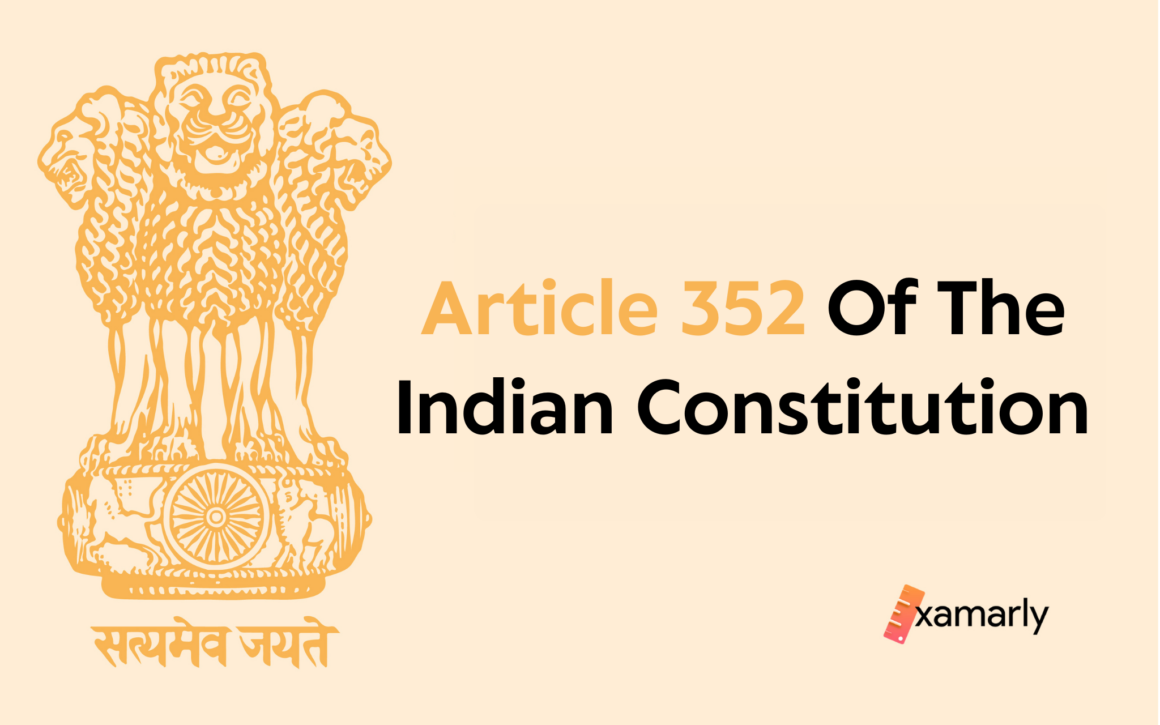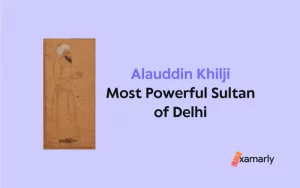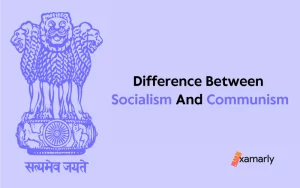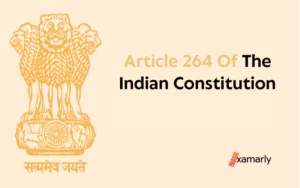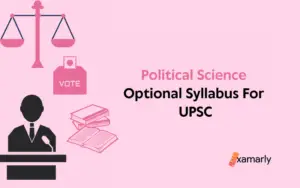In times of extraordinary circumstances, the President of India has the power to proclaim a national emergency under Article 352 of the Indian Constitution. This article grants the President the authority to issue a proclamation of emergency in the event of a threat to the security of the country or its territorial integrity, as well as in the event of a breakdown of the constitutional machinery in a state.
Such a proclamation, however, is not an open-ended one, and can only be issued for a maximum of six months, after which it must be approved by both houses of the Indian parliament. During a national emergency, the government’s powers are significantly expanded, allowing them to take a wide range of measures to address the crisis at hand.
It’s important to note that the use of Article 352 is a serious matter, and should be used only in extreme circumstances. It’s also worth mentioning that this article has been invoked several times in India’s history, and has been a source of controversy and debate.
In this blog, we will take a closer look at Article 352 of the Indian Constitution, examining its history, the circumstances under which it can be invoked, and the implications of a national emergency for Indian citizens.
- Background of Article 352 of the Indian Constitution
- Article 352 of the Indian Constitution – Proclamation of Emergency
- Clause 1 – As it is & Explained
- Clause 2 – As it is & Explained
- Clause 3 – As it is & Explained
- Clause 4 – As it is & Explained
- Clause 5 – As it is & Explained
- Clause 6 – As it is & Explained
- Clause 7 – As it is & Explained
- Clause 8 – As it is & Explained
- Clause 9 – As it is & Explained
- Grounds For National Emergency As Per Article 352
- Post Forty-fourth Amendment Act, 1978
- Conclusion
- FAQs Related to Article 352 of the Indian Constitution
- What is the purpose of Article 352 of the Indian Constitution?
- What is meant by "Proclamation"?
- How can a Proclamation of Emergency be revoked?
- What power does the President have to issue different Proclamations on different grounds?
- Can the legislative branch check the President's authority in issuing Proclamations of Emergency?
- How long does the house of the people have to hold a special sitting after receiving the notice of the resolution with respect to Proclamation of Emergency?
- What is the threshold of the members required to move the resolution with respect to the Proclamation of Emergency?
- How many times has National Emergency been proclaimed in India?
Background of Article 352 of the Indian Constitution
Article 275 of the Draft Constitution, 1948 stated:
(1) If the President is satisfied that a grave emergency exists whereby the security of India is threatened, whether by war or domestic violence, he may by proclamation, make a declaration to that effect.
(2) A proclamation issued under clause (1) of this article (in this Constitution referred to as “a Proclamation of Emergency”)-
(a) May be revoked by a subsequent proclamation;
(b) Shall be laid before each House of Parliament;
(e) Shall cease to operate at the expiration of six months, unless before the expiration of that period it has been approved by resolutions of both Houses of Parliament.
(3) A Proclamation of Emergency declaring that the security of India is threatened by war or by domestic violence may be made before the actual occurrence of war or of any such violence if the President is satisfied that there is imminent danger thereof.
On August 2nd, 1949, the draft of Article 275, now known as Article 352 of the Indian Constitution, was discussed by the assembly. This article grants the President of India the authority to proclaim a state of emergency if they believe that the country’s security is at risk.
It also establishes the guidelines for how long such a declaration can remain in effect. The Chairman of the Drafting Committee introduced an amendment to change the language from “domestic violence” to “external aggression” and “internal disturbance” to encompass a broader range of scenarios that may necessitate a national emergency.
The assembly appeared to be in favor of the amendment, with one member noting that a country may be at war without a formal declaration, as was the case with Hitler’s invasion of Poland in WWII.
However, concerns were raised about the President’s role and potential for abuse of power. Some members felt that the article gave the President too much authority and could harm democracy, individual rights, and federalism.
One member suggested that the President should only be able to proclaim an emergency with the advice of their council of ministers, to ensure that they don’t abuse their power. Others preferred that parliament take the lead in declaring an emergency.
On the other hand, some members argued that the president was more suitable than parliament in judging India’s security and declaring an emergency, as parliament is made up of “illiterate” people who are susceptible to foreign influence.
Other members pointed out that the article also required parliament’s approval, thus limiting the President’s power. Ultimately, the assembly adopted the article with only the Chairman’s amendment.
Article 352 of the Indian Constitution – Proclamation of Emergency
Clause 1 – As it is & Explained
(1) If the President is satisfied that a grave emergency exists whereby the security of India or of any part of the territory thereof is threatened, whether by war or external aggression or armed rebellion, he may, by Proclamation, make a declaration to that effect in respect of the whole of India or of such part of the territory thereof as may be specified in the Proclamation.
Explanation.—A Proclamation of Emergency declaring that the security of India or any part of the territory thereof is threatened by war or by external aggression or by armed rebellion may be made before the actual occurrence of war or of any such aggression or rebellion, if the President is satisfied that there is imminent danger thereof.
The first clause of Article 352 of the Indian Constitution refers to a specific provision in the Indian Constitution that allows the President of India to take certain actions in the event of a grave emergency. The provision states that if the President is satisfied that a grave emergency exists, which threatens the security of India or any part of its territory, he may issue a Proclamation to that effect. This Proclamation can apply to the entire country or to a specific part of the territory, as specified in the Proclamation.
A grave emergency is defined as a situation that poses a threat to the security of India or any part of its territory, whether by war, external aggression, or armed rebellion. In such a situation, the President has the authority to take action to protect the country and its citizens. The Proclamation issued by the President is a formal announcement of the emergency and serves as a legal basis for the actions taken to address the emergency.
Clause 2 – As it is & Explained
(2) A Proclamation issued under clause (1) may be varied or revoked by a subsequent Proclamation.
The provision of Article 352 of the Indian Constitution states that the President has the authority to vary or revoke a Proclamation that has been issued. This means that if the President feels that the situation has changed and the emergency is no longer as severe, he can issue a subsequent Proclamation to reflect this change. For example, if the President initially declared a state of emergency in the entire country, he can later issue a subsequent Proclamation to revoke the emergency in certain parts of the country.
Additionally, the President can also vary a Proclamation. This means he can make changes to the initial Proclamation, such as reducing the scope of the emergency or modifying the measures taken to address the emergency. This provision allows the President to adjust the response to the emergency as the situation evolves.
This provision specifies that the Proclamation issued under clause (1) can only be varied or revoked by the President himself, and not by any other official or body.
Clause 3 – As it is & Explained
(3) The President shall not issue a Proclamation under clause (1) or a Proclamation varying such Proclamation unless the decision of the Union Cabinet (that is to say, the Council consisting of the Prime Minister and other Ministers of Cabinet rank appointed under article 75) that such a Proclamation may be issued has been communicated to him in writing.
The third clause of Article 352 of the Indian Constitution states that the President is not authorized to issue a Proclamation or vary a Proclamation unless the decision of the Union Cabinet is communicated to him in writing. The Union Cabinet is the council consisting of the Prime Minister and other ministers of cabinet rank appointed under article 75 of the Indian Constitution.
This means that before the President can issue a Proclamation or make any changes to a Proclamation, he must first receive written approval from the Union Cabinet. The Union Cabinet, which is the highest executive body of the Indian government, is responsible for providing guidance and direction to the President. Therefore, the provision ensures that the decision to declare a state of emergency is taken by the highest executive body of the Indian government and not by the President alone.
It’s important to note that, this provision ensures that the decision to declare a state of emergency is taken by the highest executive body of the Indian government and not by the President alone. It also ensures that the President’s decision to issue a Proclamation is based on the advice and guidance of the Union Cabinet, which represents the collective wisdom of the government.
Clause 4 – As it is & Explained
(4) Every Proclamation issued under this article shall be laid before each House of Parliament and shall, except where it is a Proclamation revoking a previous Proclamation, cease to operate at the expiration of one month unless before the expiration of that period it has been approved by resolutions of both Houses of Parliament: Provided that if any such Proclamation (not being a Proclamation revoking a previous Proclamation) is issued at a time when the House of the People has been dissolved, or the dissolution of the House of the People takes place during the period of one month referred to in this clause, and if a resolution approving the Proclamation has been passed by the Council of States, but no resolution with respect to such Proclamation has been passed by the House of the People before the expiration of that period, the Proclamation shall cease to operate at the expiration of thirty days from the date on which the House of the People first sits after its reconstitution, unless before the expiration of the said period of thirty days a resolution approving the Proclamation has been also passed by the House of the People.
Article 352, in its fourth clause, states that every Proclamation issued by the President must be laid before each House of Parliament. This means that the Proclamation must be presented to both the upper and lower houses of the Indian parliament for review and approval. The provision also states that unless the Proclamation is a Proclamation revoking a previous Proclamation, it will cease to operate at the expiration of one month unless it is approved by resolutions of both houses of parliament before the expiration of that period.
This means that unless the Proclamation is approved by both houses of parliament within one month of its issuance, it will automatically expire and will no longer be in effect.
The provision also provides an exception in the case of when the house of people has been dissolved, or the dissolution of the house of people takes place during the period of one month referred to in this clause. In such a case, if a resolution approving the Proclamation has been passed by the Council of States, but no resolution with respect to such Proclamation has been passed by the House of the People before the expiration of that period, the Proclamation shall cease to operate at the expiration of thirty days from the date on which the House of the People first sits after its reconstitution unless before the expiration of the said period of thirty days a resolution approving the Proclamation has been also passed by the House of the People. This provision ensures that the Proclamation is still subject to the oversight and approval of the Indian parliament, even in the case of dissolution of the house of people.
Clause 5 – As it is & Explained
(5) A Proclamation so approved shall, unless revoked, cease to operate on the expiration of a period of six months from the date of the passing of the second of the resolutions approving the Proclamation under clause (4): Provided that if and so often as a resolution approving the continuance in force of such a Proclamation is passed by both Houses of Parliament the Proclamation shall, unless revoked, continue in force for a further period of six months from the date on which it would otherwise have ceased to operate under this clause: Provided further that if the dissolution of the House of the People takes place during any such period of six months and a resolution approving the continuance in force of such Proclamation has been passed by the Council of States but no resolution with respect to the continuance in force of such Proclamation has been passed by the House of the People during the said period, the Proclamation shall cease to operate at the expiration of thirty days from the date on which the House of the People first sits after its reconstitution unless before the expiration of the said period of thirty days, a resolution approving the continuance in force of the Proclamation has been also passed by the House of the People.
This provision of Article 352 of the Indian Constitution states that a Proclamation approved by the parliament unless revoked, will cease to operate after six months from the date of the passing of the second of the resolutions approving the Proclamation. This means that unless the Proclamation is revoked by the President or by the Parliament, it will automatically expire after six months.
However, the provision also provides for the possibility of extending the Proclamation by passing resolutions of both Houses of Parliament. It states that if a resolution approving the continuance in force of the Proclamation is passed by both Houses of Parliament, the Proclamation shall, unless revoked, continue in force for a further period of six months from the date on which it would otherwise have ceased to operate under this clause. This allows the Parliament to extend the Proclamation if they believe that the emergency situation still exists and that the Proclamation is still needed to address the situation.
It also provides an exception in the case of when the dissolution of the House of the People takes place during any such period of six months. In such a case, if a resolution approving the continuance in force of such Proclamation has been passed by the Council of States but no resolution with respect to the continuance in force of such Proclamation has been passed by the House of the People during the said period, the Proclamation shall cease to operate at the expiration of thirty days from the date on which the House of the People first sits after its reconstitution unless, before the expiration of the said period of thirty days, a resolution approving the continuance in force of the Proclamation has been also passed by the House of the People. This provision ensures that the Proclamation needs to be discussed and permitted by the Indian parliament, as they represent the will of the people.
Clause 6 – As it is & Explained
(6) For the purposes of clauses (4) and (5), a resolution may be passed by either House of Parliament only by a majority of the total membership of that House and by a majority of not less than two-thirds of the Members of that House present and voting.
A resolution is a formal decision made by either the upper or lower house of the Indian parliament. This provision of Article 352 of the Indian Constitution applies to the resolutions passed under clauses (4) and (5) of the Indian Constitution, which pertain to the approval and extension of Proclamations issued by the President in the event of a grave emergency.
The provision states that for a resolution to be passed by either House of Parliament, it must be approved by a majority of the total membership of that House, and by a majority of not less than two-thirds of the Members of that House present and voting. This means that for a resolution to be passed, it must receive the support of more than half of the total number of members of the house, and at least two-thirds of the members present and voting at the time of the vote.
This requirement ensures that the approval of Proclamations, which have far-reaching implications, is not a decision taken lightly, but rather with a strong majority of Members. It also ensures that the Proclamations are passed only if there is a strong agreement among the Members of the parliament, and not just a simple majority, which is crucial in the case of a state of emergency.
Clause 7 – As it is & Explained
(7) Notwithstanding anything contained in the foregoing clauses, the President shall revoke a Proclamation issued under clause (1) or a Proclamation varying such Proclamation if the House of the People passes a resolution disapproving, or, as the case may be, disapproving the continuance in force of, such Proclamation.
This clause of Article 352 of the Indian Constitution outlines a specific action that the President can take in relation to a Proclamation issued under clause (1) of the document.
As we know, the President has the authority to issue a Proclamation under clause (1). The seventh clause states that the President shall revoke a Proclamation if the House of the People, which is the lower house of the Indian Parliament, passes a resolution disapproving of the Proclamation or disapproving of the continuance in force of the Proclamation. This means that if the House of the People votes against the Proclamation or against it remains in effect, the President is obligated to revoke, or cancel, the Proclamation. This provision gives the legislative branch, represented by the House of the People, the power to check the President’s authority in issuing Proclamations under clause (1).
In summary, this clause states that the President can issue a Proclamation under clause (1) but if the House of the People passes a resolution disapproving of the Proclamation, the President is bound to withdraw it. This is a check and balance mechanism giving the power of oversight to the legislative branch on the actions of the executive branch.
Clause 8 – As it is & Explained
(8) Where a notice in writing signed by not less than one-tenth of the total number of members of the House of the People has been given, of their intention to move a resolution for disapproving, or, as the case may be, for disapproving the continuance in force of, a Proclamation issued under clause (1) or a Proclamation varying such Proclamation,—
(a) to the Speaker, if the House is in session; or
(b) to the President, if the House is not in session, a special sitting of the House shall be held within fourteen days from the date on which such notice is received by the Speaker, or, as the case may be, by the President, for the purpose of considering such resolution.
The eighth clause of Article 352 of the Indian Constitution is also related to the process of revoking a Proclamation issued under clause (1) of the document. It explains the procedure for members of the House of the People, the lower house of the Indian parliament, to initiate the process of disapproving a Proclamation and for the House to consider and vote on the resolution.
The clause states that a notice in writing signed by not less than one-tenth of the total number of members of the House of the People must be given, indicating their intention to move a resolution for disapproving a Proclamation issued under clause (1) or a Proclamation varying such Proclamation. This notice can be given to the Speaker of the House if the House is in session, or to the President if the House is not in session.
Once the notice is received, the clause states that a special sitting of the House shall be held within 14 days from the date on which such notice is received by the Speaker or the President. This special sitting is for the purpose of considering the resolution for disapproving the Proclamation. This means that the House will debate and vote on the resolution during this special sitting.
This clause establishes the requirement of a notice signed by one-tenth of the members of the House of the People, and the provision of a special sitting within 14 days of receiving such notice, as a procedural requirement to be followed before a resolution of disapproving a Proclamation could be tabled, discussed and voted upon in the House of the People. This requirement ensures that a certain level of support exists among members of the house before the resolution can be considered, and also ensures that the process of considering the resolution is time-bound.
Clause 9 – As it is & Explained
(9) The power conferred on the President by this article shall include the power to issue different Proclamations on different grounds, being war or external aggression or armed rebellion or imminent danger of war or external aggression or armed rebellion, whether or not there is a Proclamation already issued by the President under clause (1) and such Proclamation is in operation.
The ninth or final clause of Article 352 of the Indian Constitution specifically, it states that the President’s power to issue Proclamations includes the ability to issue different Proclamations on different grounds.
The clause lists the following grounds as examples: war, external aggression, armed rebellion, the imminent danger of war, the imminent danger of external aggression, or the imminent danger of armed rebellion. These are all circumstances that could be considered as grounds for issuing a Proclamation. The clause emphasizes that the President has the power to issue a Proclamation on any of these grounds, whether or not there is already a Proclamation in effect that was issued under clause (1) of the document.
This means that the President can issue multiple Proclamations at different times, each addressing a specific situation of war, external aggression, armed rebellion, or imminent danger of any of these, even if there is already an existing Proclamation in operation.
The above-mentioned clause provides the President with a wide range of discretion to take action in case of exigencies and to react to different situations that might arise as the situation evolves and in order to ensure the safety and security of the nation. This provision is giving the President the flexibility to address different situations as they arise, without being constrained by the existence of a previous Proclamation.
Grounds For National Emergency As Per Article 352
A National Emergency can be declared under Article 352 of the Indian Constitution in the following situations:
- When the safety and security of the country are in danger due to armed rebellion, external aggression, or war.
- The emergency of war and external aggression is referred to as the external emergency while the emergency of armed rebellion is referred to as the internal emergency.
- The term “armed rebellion” was introduced through the 44th Amendment Act of 1978 by replacing the term “internal disturbances”, to prevent misinterpretation and potential states’ political persecution.
- The Indian President can also declare a national emergency even before the emergence of an armed rebellion, external aggression or war if they are convinced there is a serious danger.
Post Forty-fourth Amendment Act, 1978
Under the current form of Article 352 of the Indian Constitution, the President can only proclaim a state of emergency if they have received confirmation of the crisis situation from the Prime Minister and Cabinet, in written form. According to Article 74, the President has the option to send the written dossier for emergency proclamation back to the Prime Minister and Cabinet for reconsideration. However, if the Cabinet resubmits it, the President is obligated to proclaim an emergency. This process has been put in place to ensure that there is no longer the possibility for the Prime Minister to make a unilateral decision about the proclamation of an emergency without any written explanation or transparency, unlike in 1975.
Furthermore, a simple majority of the Indian parliament is no longer sufficient for the proclamation of an emergency. After the 44th Amendment, a special majority is required. Both houses of the Indian parliament must approve the proclamation of an emergency by a majority of their total membership and by a majority of at least two-thirds of the members present and voting. Prior to the 44th Amendment, the proclamation would cease to operate after two months if it did not receive majority approval from both houses of parliament. However, now this period has been shortened to one month after the 44th Amendment.
Conclusion
In conclusion, Article 352 of the Indian Constitution sets out the structure for the President to issue a Proclamation of Emergency in the event of a war, external aggression, armed rebellion, or imminent danger of any of these. It also provides for the revocation of such a Proclamation if the House of the People passes a resolution disapproving of it. The article also states that the President has the power to issue different Proclamations on different grounds, even if there is already a Proclamation in effect.
This article plays an important role in preserving the safety and security of the nation in times of crisis, while also providing a mechanism for the legislative branch to check the President’s authority in issuing Proclamations. It’s a balance between the need of the state to take strong and swift action in case of exigencies and the need to ensure that the power is not misused and that the rights of citizens are protected.
Related Articles:
FAQs Related to Article 352 of the Indian Constitution
What is the purpose of Article 352 of the Indian Constitution?
The purpose of Article 352 of the Indian Constitution is to provide a framework for the President to issue a Proclamation of Emergency in the event of a war, external aggression, armed rebellion, or imminent danger of any of these.
What is meant by “Proclamation”?
A Proclamation is a formal announcement issued by the President, in which he declares a state of emergency in the country or a specific part of the territory, as specified in the Proclamation.
How can a Proclamation of Emergency be revoked?
A Proclamation of Emergency can be revoked if the House of the People passes a resolution disapproving of it.
What power does the President have to issue different Proclamations on different grounds?
The President has the power to issue different Proclamations on different grounds, such as war, external aggression, armed rebellion, or imminent danger of any of these, even if there is already a Proclamation in effect.
Can the legislative branch check the President’s authority in issuing Proclamations of Emergency?
Yes, the legislative branch can check the President’s authority in issuing Proclamations of Emergency through the process of passing a resolution disapproving of the Proclamation.
How long does the house of the people have to hold a special sitting after receiving the notice of the resolution with respect to Proclamation of Emergency?
The House of the People must hold a special sitting within 14 days from the date on which such notice is received by the Speaker or the President.
What is the threshold of the members required to move the resolution with respect to the Proclamation of Emergency?
The threshold of the members required to move the resolution is not less than one-tenth of the total number of members of the House of the People.
How many times has National Emergency been proclaimed in India?
There have been three Proclamations of Emergency in India – 1st Proclamation of Emergency (India – China) in 1962, 2nd Proclamation of Emergency (India – Pakistan in 1971, and 3rd Proclamation of Emergency or Emergency by Indira Gandhi on the grounds of Internal Disturbance in 1975.


